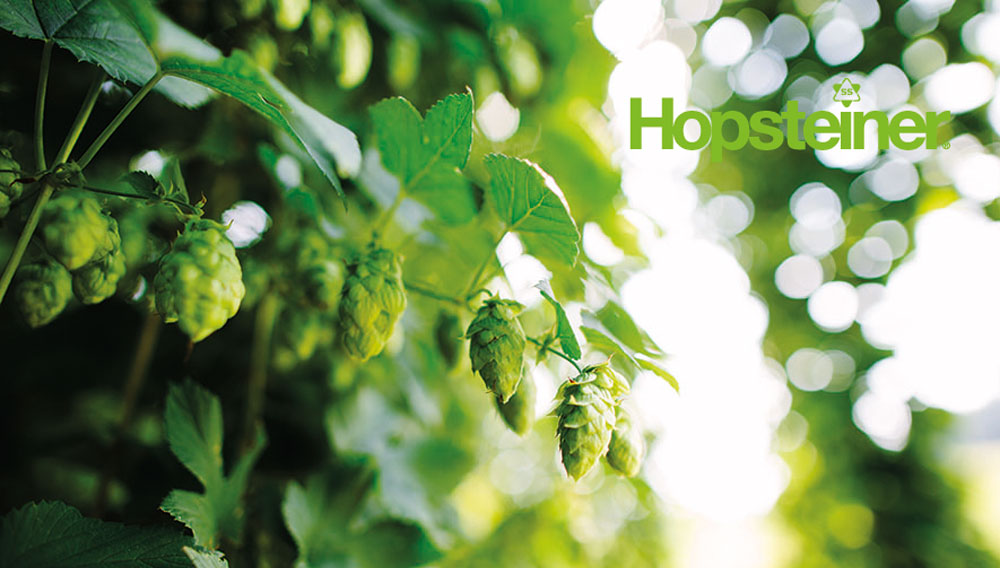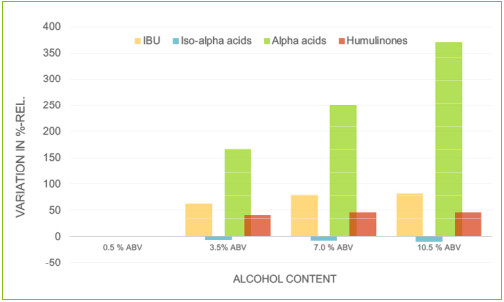The effect of ethanol content in beer on hop components after dry hopping
Technical Support | The technique of dry hopping is used to produce many different beer styles with various alcohol contents. Information about the alcohol-dependent behaviour of hop components after dosing is crucial to control the resulting flavour and ensure consistent beer quality.
Our systematic pilot-scale study was therefore performed using standardised procedures by only varying the alcohol content in the beer samples in four steps from 0.5 % to 10.5 % alcohol by volume (ABV). After bottling, the beers were analysed for volatile and non-volatile hop components. Each single trial was performed in triplicate, averaged results are demonstrated below. An excerpt of the full study is given in Table 1, showing variations of the bitter substances after dry hopping:
It is obvious, that especially the non-polar alpha acids increase drastically with more ethanol added to the beer. As a result of more alpha acids dissolved, the analytical IBUs raise up to roughly 80% of their initial value. After dry hopping, the expected decrease in iso-alpha acids was observed, not necessarily linked to the amount of ethanol added. The polar humulinones introduced by dry hopping remain on a constant level and are therefore unaffected of the beers’ ethanol concentration. Please have a look on our study, demonstrating more results of the ethanol-dependent solubility of hop aroma substances in beer and further attributes, such as foam stability, pH and nitrates.



